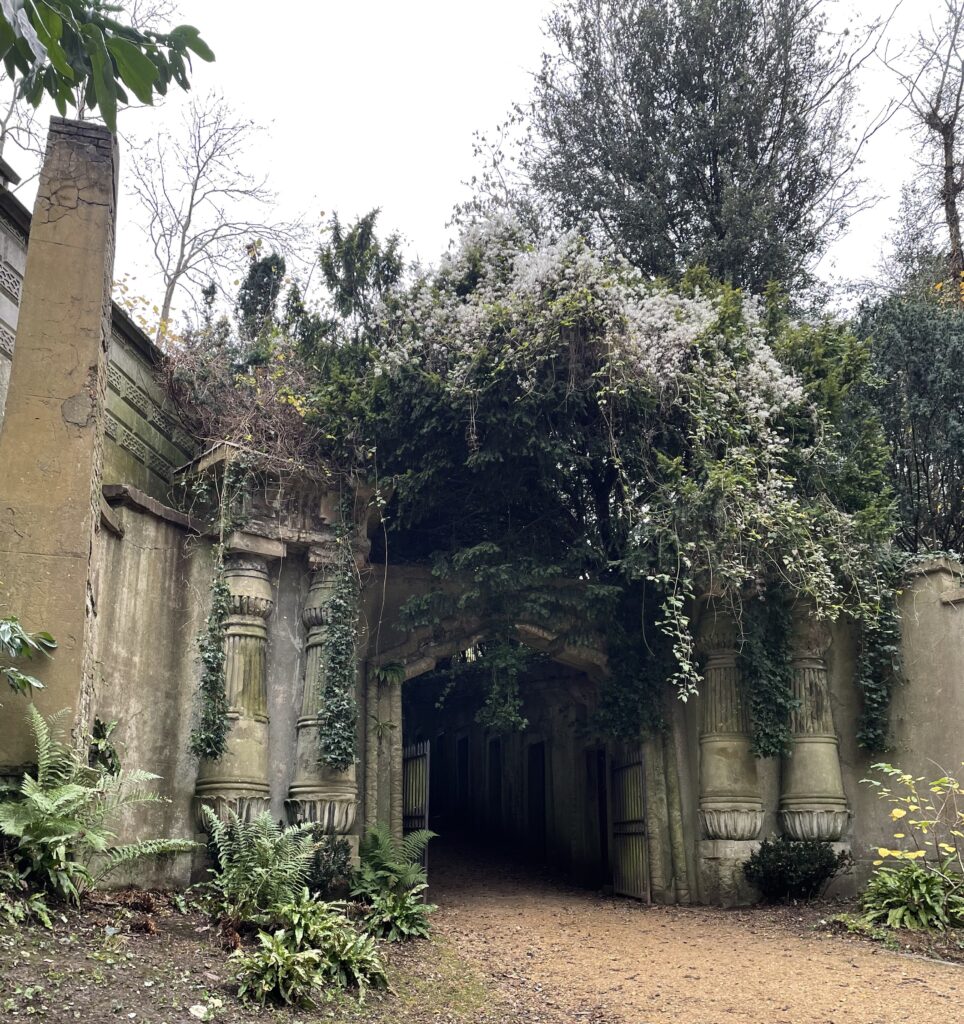Last year, colleagues from Highgate Cemetery joined the Healthy Parks and Green Space Network I jointly run with Gemma Moore and Liza Griffin from UCL’s Bartlett Faculty. The Cemetery team also generously hosted our first in-person meeting, in one of their chapels. We organised a “green walk” to this from Archway station to help participants locate the Cemetery in its locality, taking in Islington’s Girdlestone Estate and Camden’s Waterlow Park and swinging by the Whittington Estate and Camden & Islington mental health trust’s new buildings.
A spin-off from Camden and Islington’s Parks for Health programme, the Network facilitates knowledge exchange across research and practice and between professional disciplines. It’s guided by an evidence-based Framework for designing, appraising and managing urban green spaces to be positive for the wellbeing of people and the environment and to reduce health inequalities.
The majority of Network members represent council-managed public parks and their communities (residents or health and social care service users). Highgate Cemetery, however, is a charitable trust, set up in the 1970s to rescue from decline what is now a Grade 1 Listed site (buildings and landscape) originating as one of London’s mid-19th century Magnificent Seven. These cemeteries were private enterprises, enabled by an act of Parliament in 1832 in response to public health issues arising from London’s rapidly expanding population and attendant sanitary demands. Today, the Trust derives its income from memberships, legacies, donations and burial rights. It also charges for entrance: a lowish fee but acknowledged to be a barrier to some. They do hold “Neighbour Days” which offer free entrance to people living in specific postcodes. As an organisation, the Cemetery has been grappling thoughtfully with the implications of this funding model and other actual or perceived barriers to visiting, whether physical (part of the site is tricky, if not risky, to navigate) or cultural (such as mistaken assumptions about required religious affiliation). They also recognise the enormous potential to promote wellbeing by providing local people with experiences of nature and heritage which, in turn, can engender “place attachment” or pride in place.
The Cemetery’s involvement in our Network has already enriched our own thinking and prompted some interesting and interconnected questions in relation to green space, health and sustainability. For example:
What does “inclusion” look, feel and sound like in an active modern burial ground – and one which is also a heritage attraction steeped in a quite specific cultural history?
How do you meet the needs of national and international visitors alongside those of local people?
What behaviours can or should be expected and how can these be fostered?
What is the distinctive contribution of a historic cemetery as green space to urban mental health and reducing health inequalities?
What is its role in the evolving world of environmentally sustainable burial?
In January 2024, the Trust was awarded a grant by the National Lottery Heritage Fund for the development phase of Unlocking Highgate Cemetery, a major conservation programme and associated education and public-facing activities. We’re delighted to be playing a modest role in this by helping to scope a new “Healthy Cemeteries Framework”, exploring the questions above and, no doubt, many more with colleagues locally and further afield.



